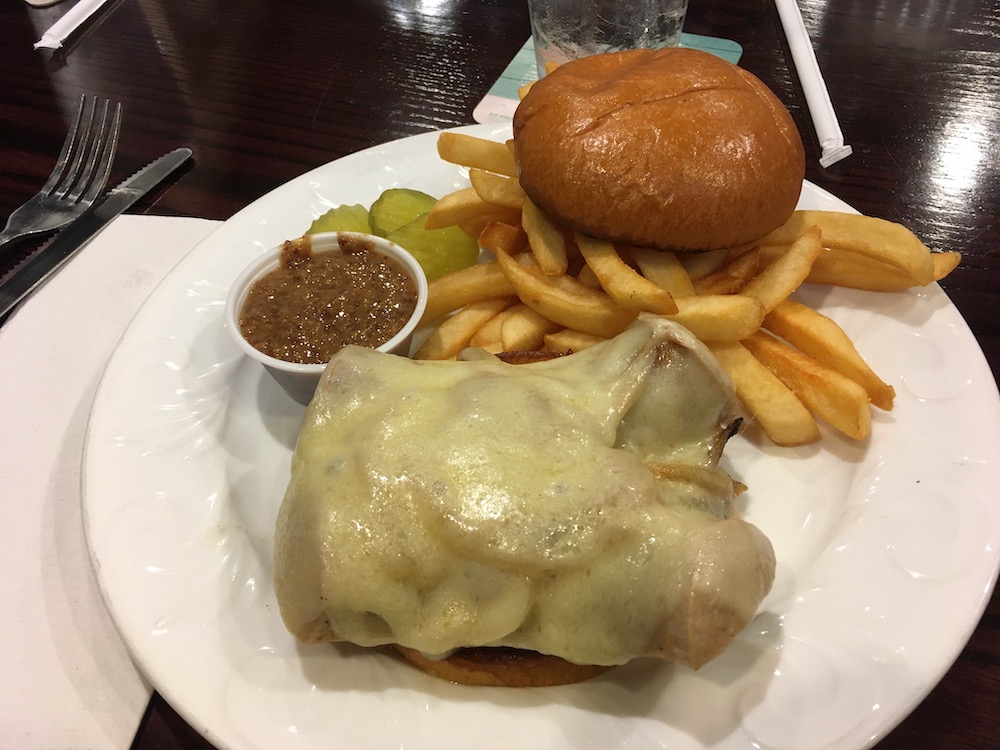If you read my book, Destination Heartland: A Guide to Discovering the Midwest’s Remarkable Past, you’ll already know that Monroe, Wisconsin, is the “Swiss Cheese Capital of the USA.” You may also remember that I visited the Ratskeller Restaurant at Monroe’s Turner Hall (and yes, it is Ratskeller, which is Swiss German, vs. Rathskeller, which is German-German). Being in the Swiss Cheese Capital, that first time, I of course had to have the Swiss Cheese Pie. (And they kindly gave me the recipe for this, for inclusion in my book.) But I was enthusiastically informed by my guide that I must return for the Kalberwurst sandwich. I promised I would come back.
A few weeks ago, having a speaking engagement only 30 miles from Monroe, I turned my wheels north and returned, with the goal of keeping that promise. Happily, I was able to connect with the woman who had offered the recommendation, and she joined me for lunch,
The Kalberwurst itself is a veal sausage that originated in Glarus, Switzerland. At the Ratskeller, it is served smothered with caramelized onions and melted Swiss cheese, served on a bun with a small pot of gnarly, slightly sweet mustard. The sandwich was great (and seriously, smothered in onions and melted cheese, how could it be otherwise), but being able to keep a promise is also always a treat.

After lunch and a long chat, I continued on, heading for the Chalet Cheese Co-operative, the last place in the U.S. that makes Limburger cheese. Chalet Cheese is a few miles out of town, amid a rolling, green countryside. The “factory,” pristinely white and perched on a hill overlooking surrounding farms, has a small store where you can stock up on this and other offerings. The co-op uses milk from the 21 member families (ninety-five percent of all Wisconsin dairy farms are family owned), so the cheesemakers always know exactly what they’re getting, with milk coming from Holstein (70%) and Brown Swiss (30%) cows.
The tidy shelves in the modest shop offer mild, medium, and aged Limburger, and Limburger spread. Also on offer are, among other things, dill Havarti, Brick (invented in the U.S. by Swiss cheesemaker John Jossi), a range of processed cheese spreads, and, of course, Swiss in a number of forms. Fortunately, I’d brought a small cooler with me. So yet another reason to visit Monroe (besides those mentioned in my book.)





